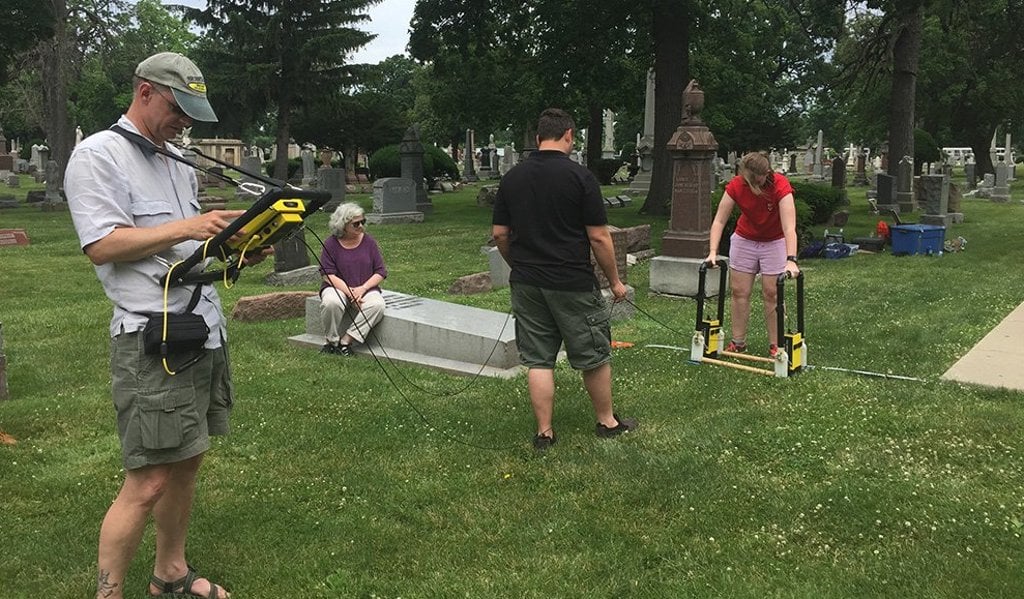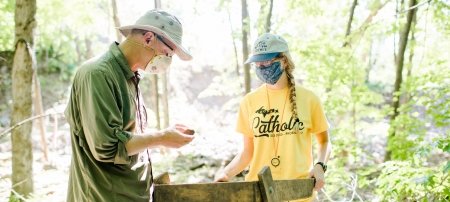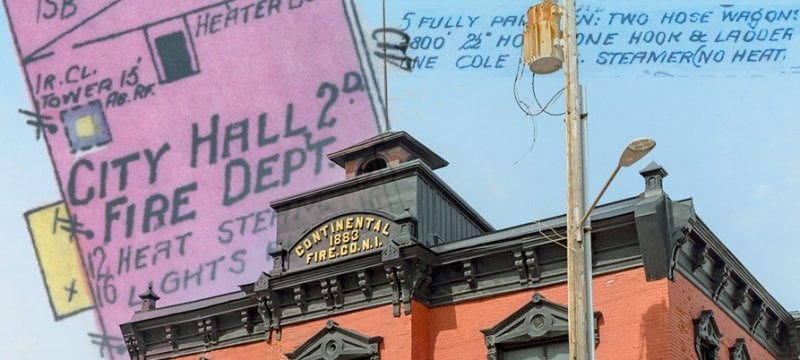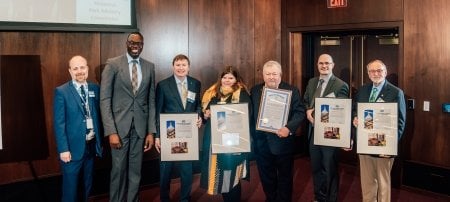It all began with the labor movement’s fight for an 8-hour work day.
In Chicago’s Haymarket Square in 1886, a peaceful demonstration turned deadly when a bomb was thrown. In the chaos that followed, panicked police started shooting indiscriminately, killing seven of their own officers and at least four workers. In the wake of the Haymarket Riot, eight members of the labor movement were arrested. After a questionable trial, seven of the leaders were sentenced to hang. Two sentences were commuted by the governor, and one defendant committed suicide in jail, while four men were hung. While the public outrage at the violence created a “red scare” in the United States that set back the cause of the eight-hour day, the martyring of innocent labor leaders galvanized union organizers around the world. May Day celebrations around the world still commemorate those executed because of Haymarket.
Now, 130 years later, 21st century technology and a group of determined historians and archaeologists are bringing the historic Haymarket Affair back into people’s awareness. And Michigan Technological University industrial archaeologist Tim Scarlett is playing a small part.
Time Capsule Captures Haymarket Affair
In 1892, leaders began erecting a monument to the Haymarket martyrs at their graves in Forest Home Cemetery in Forest Park, a suburb of Chicago. Before the monument was raised the following year, they buried a time capsule under the cornerstone, containing letters written by the martyrs themselves, family photos, newspaper articles printed at the time and documents from labor unions.
As decades and generations passed, the time capsule was forgotten.
Its existence resurfaced about three years ago, when a labor historian and a research librarian came across a Chicago Tribune article dated Nov. 7, 1892. The newspaper article chronicles the time capsule that was ceremoniously buried under the cornerstone of the monument. A researcher contacted Rebecca Graff, then Visiting Assistant Professor in Michigan Tech’s Social Sciences Department, about the time capsule, but Graff, who was expecting her first child at the time, put her curiosity on hold.
Three years passed. Graff moved back to the Chicago area as an Assistant Professor at Lake Forest College, and when Illinois Labor History Society historian Mark Rogovin asked her to take charge of the archaeological work of retrieving the time capsule, she was thrilled.
“I was in the area, and I had the resources and students to finally do this work,” she says. “It was impossible to say no to Haymarket and to these wonderful labor historians.”
Graff knew her Michigan Tech colleague Tim Scarlett’s passion for labor history and the use of technology in archaeological investigations, so she reached out to him. Scarlett promptly agreed to bring Tech’s ground-penetrating radar (GPR) to Haymarket Martyrs' Monument to see if he could help locate the time capsule.
Ground-Penetrating Radar
Ground-penetrating radar is a standard tool in geophysics and archaeogeophysics, a tool that permits non-invasive mapping of things below the surface of the ground. Archaeologists use the device to find large objects as well as locate and map soil disturbances. The device uses a pair of antennas, Scarlett explains. One antenna emits short bursts of energy in the form of radio waves similar to microwaves. The waves pass through matter in the ground and either reflect, refract, or scatter and dissipate.
Many materials cause the energy to bounce back to the receiver antenna, Scarlett continued. When the energy hits an object, like an iron pipe or a foundation of brick or stone, the object reflects a great deal of energy. If, in the past, a person, animal or natural process disturbed the soil layers in one spot, the radar reflection there will change. “So it is possible to use ground-penetrating radar to ‘see’ things like pits, burials, hidden stream channels, faults and earthen features,” says Scarlett.
Along with the strength of the returned signal, the GPR receiver records the sliver of time between the emitted and reflected “pings.” The software uses the speed which the energy moves through different materials to calculate how far below the surface a particular object might be located.
Scarlett has worked in the past with Jeremy Shannon and Charles Young, both faculty in Michigan Tech's Department of Geological and Mining Engineering and Sciences. “We’ve used this technology, along with other remote sensing techniques, at industrial heritage sites like the Keweenaw’s Cliff Mine and the Quincy Smelter, New York’s West Point Foundry and pottery kiln sites in Utah.
The value of remote sensing technologies like ground-penetrating radar is enormous. “Archaeology is very, very expensive in time and labor,” Scarlett says. “Fieldwork costs a lot of money. Any technology that can help us learn without digging, or when we must dig, by making our work as effective as absolutely possible, makes great contributions to the field.”
Archaeologists and geophysicists also often use GPR to try and find graves in historic cemeteries, sometimes because those graves must be removed or the current caretakers don’t know exactly where the burials all are located. “Technology like this is also incredibly important when you want to avoid disturbing things,” Scarlett added.
The summer’s GPR survey identified many “targets,” most of which looked more like burials than time capsules. This October, community volunteers and students from Lake Forest College and DePaul University tested a likely target but found it was an old water pipe. Working in an adjoining area, they then unearthed something promising that hadn’t appeared to the GPR, but X-rays of the container showed it was not the time capsule after all.
The search will go on. The Illinois Labor History Society and everyone else who has been involved in the project still want to know what the people who lived through the Haymarket Affair had to say to future generations. As Jane Baxter, a collaborating archaeologist from DePaul, put it: “The people who placed this capsule were thinking of us."
And Graff, Baxter, and Scarlett stand ready to pitch in again if the society needs help
Michigan Technological University is an R1 public research university founded in 1885 in Houghton, and is home to nearly 7,500 students from more than 60 countries around the world. Consistently ranked among the best universities in the country for return on investment, Michigan's flagship technological university offers more than 120 undergraduate and graduate degree programs in science and technology, engineering, computing, forestry, business, health professions, humanities, mathematics, social sciences, and the arts. The rural campus is situated just miles from Lake Superior in Michigan's Upper Peninsula, offering year-round opportunities for outdoor adventure.







Comments